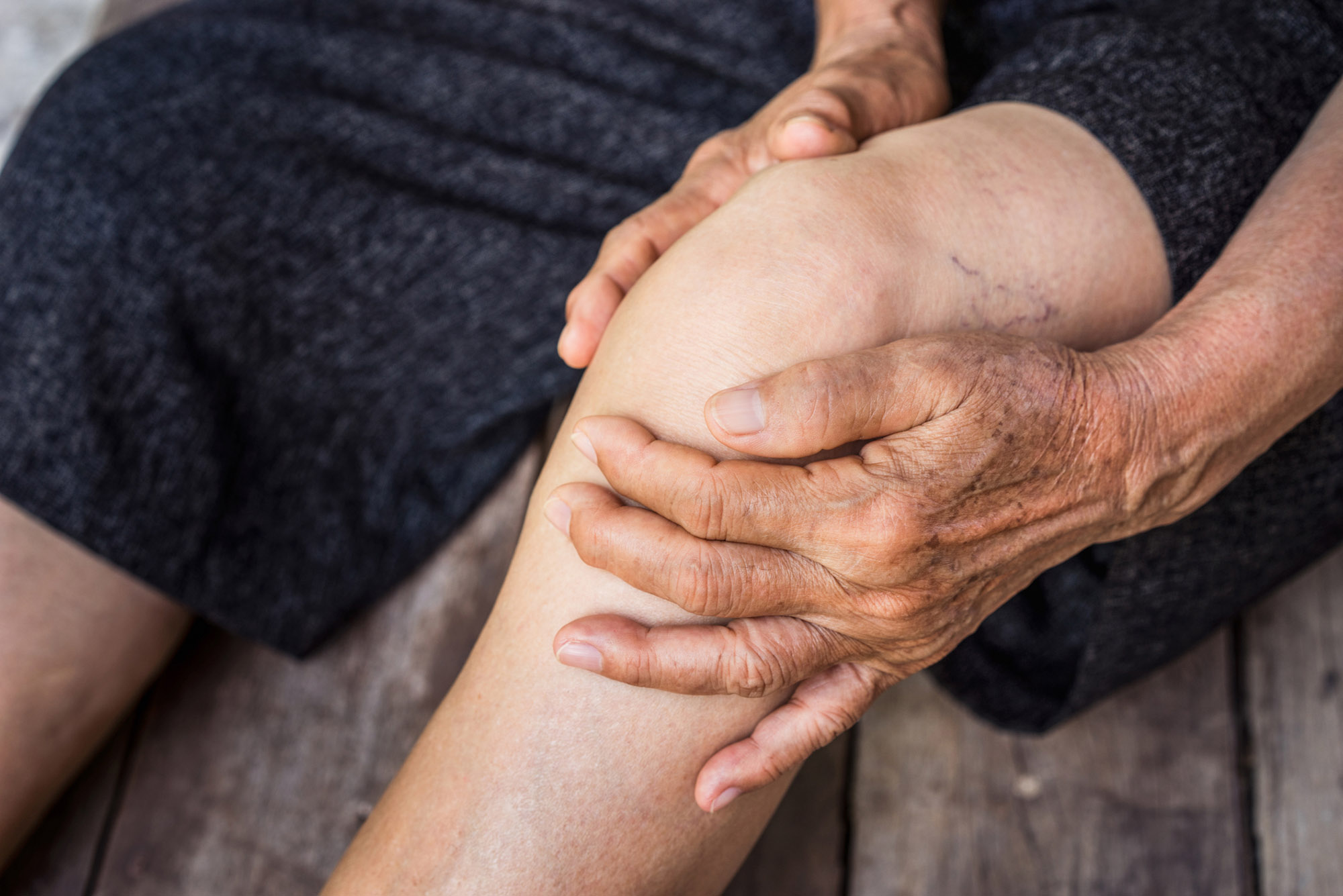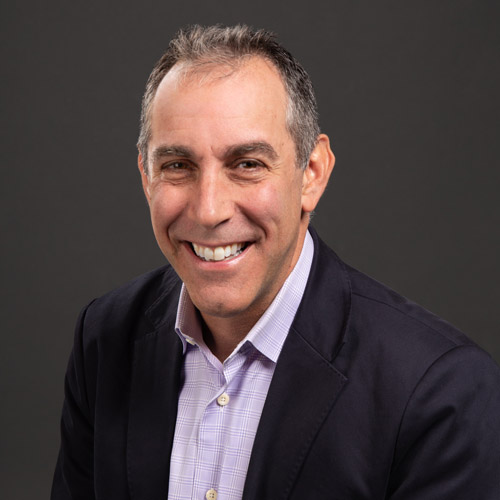What Causes Osteoarthritis? BU Researchers Win $46 Million Grant to Pursue Answers and Find New Treatments

Photo by ojoel/iStock
What Causes Osteoarthritis? BU Researchers Win $46 Million Grant to Pursue Answers and Find New Treatments
National Institute on Aging award to support research that aims to reduce need for knee and hip replacement surgeries
Anyone who suffers from osteoarthritis knows the symptoms all too well—joint pain and stiffness, loss of flexibility, a decreased range of motion, especially around the knees and hips. And with more than 33 million US adults afflicted with it, the disease is by far the most common form of arthritis, according to the Centers for Disease Control and Prevention.

But for researchers who study osteoarthritis, much of the focus has been on finding better ways to manage the pain rather than trying to prevent it from developing. A pair of researchers at the Boston University Chobanian & Avedisian School of Medicine have been taking a different approach, trying to understand what causes osteoarthritis—and then using that information to find ways to slow its onset and provide more effective and targeted treatments. And they have received a five-year, $46 million award to support their ongoing study, one of the largest awards BU’s medical school has received. The funding was given by the National Institutes of Health’s National Institute on Aging.

David T. Felson and Tuhina Neogi, both professors of medicine and also of epidemiology at the BU School of Public Health, say their work—titled, “Novel Insights into Osteoarthritis, Pain and Function: The Multicenter Osteoarthritis (MOST) Study”—is entering its 4th cycle and 20th year. In separate interviews with The Brink, they say they are hopeful that it will one day lead to what’s been so elusive for years: effective treatments for people with osteoarthritis, so that they no longer need to resort to knee and hip replacement surgeries. One key project will be the first large-scale exploration of different crystals in the joints that can contribute to pain.
To date, their study has included more than 4,500 participants. The new award will not only ensure their research continues, but will also help them bring in new study participants from underrepresented racial and ethnic groups.
The following are excerpted from conversations with both Felson and Neogi.
The Goal: Preventing Progression and Surgeries
Felson: We have been trying to figure out how to prevent osteoarthritis, so then we could identify risk factors for how to treat it. We’re talking about prevention when you already have a little bit of disease, or preventing the progression of disease, or identifying factors that we might use to treat disease. Those are the things that we’re really interested in.
Neogi: Osteoarthritis far outnumbers any other form of arthritis, and it’s a leading cause of disability among older adults. It is the third most common hospital discharge diagnosis—knee or hip replacement surgery—behind childbirth and sepsis. I would have thought heart attacks and heart failure would be more common reasons. It just highlights how common this surgical procedure is, because we don’t have effective therapies to prevent the onset and progression of osteoarthritis.
Felson: The study started in 2003 in the field. We recruited about 3,000 people, from two sites: Birmingham, Alabama, and Iowa City, Iowa. They are both university academic centers, and they serve a large community. In the mid-2010s, we recruited another 1,500 people, as the initial group was getting older and more frail.
Earlier Diagnosis, Finding Treatment Targets
Felson: What we’ve learned so far came from one of the major insights early on in the study. We got MRI scans on all these knees, including in the community, and what we found was that by the time people started having pain and seeing the doctor, their joint damage was pretty far along, and we needed to study them earlier. This is a message that’s emerging from Alzheimer’s disease, too—that the time to prevent or to treat, if you’re going to be successful, is relatively early in the course of disease. That was one of the major insights.
Neogi: Another way imaging, including MRIs, can help is fine-tuning the understanding of the different abnormalities present in osteoarthritis joints to eventually inform how to get the right treatment for the right patients at the right time. Right now, it’s sort of a one-treatment-fits-all-patients approach. We need to identify different characteristics a person has, and then identify treatments that are best for their characteristics. One key project in this new cycle will be the first large-scale exploration of different crystals in the joints and study of how they may be contributing to pain and pathology within the joint.
Ultimately, this work is about improving the functioning, pain, symptoms, quality of life, and ability to participate in things that are important to people living with osteoarthritis by finding ways to manage it optimally.
Felson: We have a lot of people in the study who were not experiencing pain, but developed pain—we can sort of anticipate that based on factors like their weight or age. We had some people who just had a little bit of pain, it bothered them a little going down stairs. So, then we looked at what factors impacted them.
Neogi: We are not testing treatments. This is not a clinical trial. But the scientific insights we can make with the data we have can help identify potential treatment targets, things that are worth pursuing that might benefit people with osteoarthritis.
Why We All Feel Pain Differently
Felson: Tuhina has inaugurated the study of pain and pain sensitivity, and how it impacts the development of pain. Certain people are very sensitive. Those people are at high risk of developing more pain, and maybe progressing more.
Neogi: It used to be thought of as just a cartilage issue in the joints. Now we know it’s not just about cartilage, it’s also about all the tissues in the joints, and specific tissue pathologies may provide different opportunities for treatment. For example, bone marrow lesions are associated with pain and worsening structural damage. If you could find a way to improve bone marrow lesions, maybe symptoms and structural progression can be improved.
Another major contribution we have made to osteoarthritis is to understand mechanisms underlying someone’s pain experience. If I punch you and I punch your neighbor, you will both experience the pain differently. The pain experience is highly individual, and we have been studying different factors that contribute to the variability in how people experience pain.
Next Up: Understand Inflammation and Exercise “Highs,” Identify Treatments
Felson: An important goal of this new cycle is understanding exercise-induced hypoalgesia [known as EIH, which is akin to the runner’s “high” that some people feel during and immediately after running]. Many people who exercise feel great afterward, and that can translate into having less pain. People who have that tend to want to exercise. But about 50 percent of people don’t get that experience. They think exercise brings more pain, not less. So, how can we help those people? Are there other things going on that we can try to address?
Neogi: What if some people are not wired to receive the benefits of physical therapy and physical activity, or the runner’s high? We are trying to tease this out as it would have very clear implications for treatment decisions. If someone has this abnormality, we need to find a way to normalize that response.
Felson: Another major part of this study has to do with fluid within the joints. So, when you get arthritis in your knee, you tend to accumulate fluid because the lining of the joint makes it, and with inflammation, which is part of arthritis, you then get a collection of fluids. That’s what happens when people say their knee is all swollen and they can’t do some activity, because they’ve collected this fluid. The knee releases proteins into the blood, so we’ve been trying to do studies on this from the blood, but the problem is all organs and joints release proteins into the blood, and you can’t identify what’s coming from the knee. So, what we’re going to do is put a needle in the joints of patients who have fluid in their knees and get the fluid out and examine it with a lot of sophisticated methods to try to get a sense of whether there are particular proteins there in excess numbers, and whether those proteins influence their disease progression and pain.
Ultimately, we want to identify treatments. The only thing we can offer now is knee replacements. That’s the end of the road. People don’t want that. And the surgery is not always successful. People have persistent pain. We need to figure out ways to stop or slow the disease so it’s not so disabling and people can avoid the surgical route. Knee replacement rates have gone skywards, Medicare can’t keep up, and rates are likely to increase. We’re talking about more than a million per year. It’s a really big issue. So, finding causes that might prevent progression of the disease, and new opportunities to treat it, are really important public health issues.
Neogi: At the time we received news about the award, I was on maternity leave, so the joy and enthusiasm probably was dampened by my sleep deprivation. I would have been jumping for joy. It is like a sports analogy—you work hard and sometimes you don’t score that touchdown. But sometimes you do get it, and you win the game. It’s a big team effort, and we’re fortunate to have a great team to continue working on this challenging disease that affects so many millions of people worldwide.

Comments & Discussion
Boston University moderates comments to facilitate an informed, substantive, civil conversation. Abusive, profane, self-promotional, misleading, incoherent or off-topic comments will be rejected. Moderators are staffed during regular business hours (EST) and can only accept comments written in English. Statistics or facts must include a citation or a link to the citation.